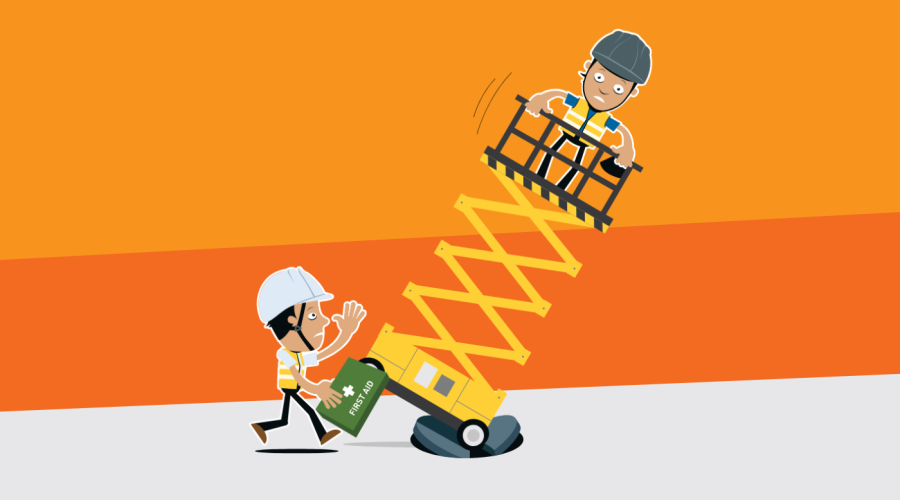Why powered access safety begins with good planning

Falls from height are still the main cause of deaths in the workplace. The EU Temporary Work at Height Directive 2001/45/EC, which has certainly saved lives, states: “Work at height may expose workers to particularly severe risks to their health and safety, notably to the risks of falls from a height and… fatal accidents.”
MEWPs are specifically designed to safely conduct temporary work at height and have been recognised as such by safety bodies across Europe. Working safely at height using MEWPs is underpinned by good planning, trained and properly supervised operators using the correct machine for the job.
Intermat,is a chance to showcase IPAF’s new safety campaign for 2018-19. This outlines why operators and managers conducting work at height using MEWPs should plan ahead for safety; carry out proper risk assessments, choose the correct equipment for the job, conduct site and machinery inspections, use trained and familiarised operators under proper supervision and implement adequate segregation from other plant machinery and traffic.
Andrew Delahunt, IPAF’s Technical & Safety Director, says: “From IPAF’s accident data analysis, we’ve identified four key accident causes that result in falls from the MEWP platform. These accidents can be prevented by proper planning and safely managing the use of MEWPs. We are highlighting these factors so managers and operators know the risks and know their responsibilities.”
Some of the key points of guidance to consider from the include:
- Risky behaviour: Operator behaviour when using MEWPs is usually a positive factor in terms of safety, but risky behaviour can be a contributing cause of falls from the platform. Common risky behaviours include overreaching or leaning out of the platform, climbing on guardrails, tying gates open or overriding safety controls. To discourage such behaviours, managers must ensure all operators are properly trained; that the right machine is selected for the job; and work at height is adequately supervised.
- Exiting at height: To avoid falls from height while using MEWPs, operators should only enter or exit the work platform at access positions at ground level or on the MEWP chassis. An exception is during a rescue operation, where it may be necessary to exit the platform and descend by other means. This type of rescue should only be conducted where other methods cannot safely evacuate the platform occupants. Prior to use, make sure to have a formal emergency rescue plan that documents the proposed rescue methods, and rank them in a hierarchy with the safest option first.
- Setting up near other machinery or vehicles: MEWPs are frequently positioned in proximity to moving machinery or alongside vehicular traffic. A collision between a MEWP and a crane, other plant machinery or a road vehicle can be catastrophic. Therefore always restrict movement of machinery and/or traffic near the MEWP. Ensure job site planning and risk assessments are conducted prior to positioning the MEWP, and implement adequate exclusion zones and a vehicle traffic management plan.
- Mechanical failure: To avoid accidents through mechanical failure and to ensure MEWPs are maintained in safe working order – which is the owner’s legal obligation – all MEWP owners should implement a rigorous inspection, maintenance and thorough examination regime. The period and scope of the inspections are stipulated by government legislation and by the MEWP manufacturer and is listed in the MEWP operator’s manual. The inspection schedule includes: Pre-use inspection; periodic inspections at three or six months; annual inspection; all inspections must be conducted by a competent person with adequate training and experience on that type of MEWP.
To support IPAF’s new safety campaign a new online spreader pad calculator has been launched at pads.ipaf.org. IPAF also offers Andy Access safety posters that can be used to deliver quick and simple safety talks on sites or in breakrooms and to further support this is also developing a series of Toolbox Talks to help get these important messages across.
For more on the new safety campaign, the latest developments on legislation and standards, the enhanced IPAF training offer or to pick up the latest safety and technical guidance materials and Andy Access posters, come and visit IPAF on stand BC009 in Hall 6 on 23-28 April. PS don’t forget to look out for IPAF’s larger-than-life Andy Access mascot around the site pointing visitors towards the IPAF stand – as always, he’ll be hard to miss.
